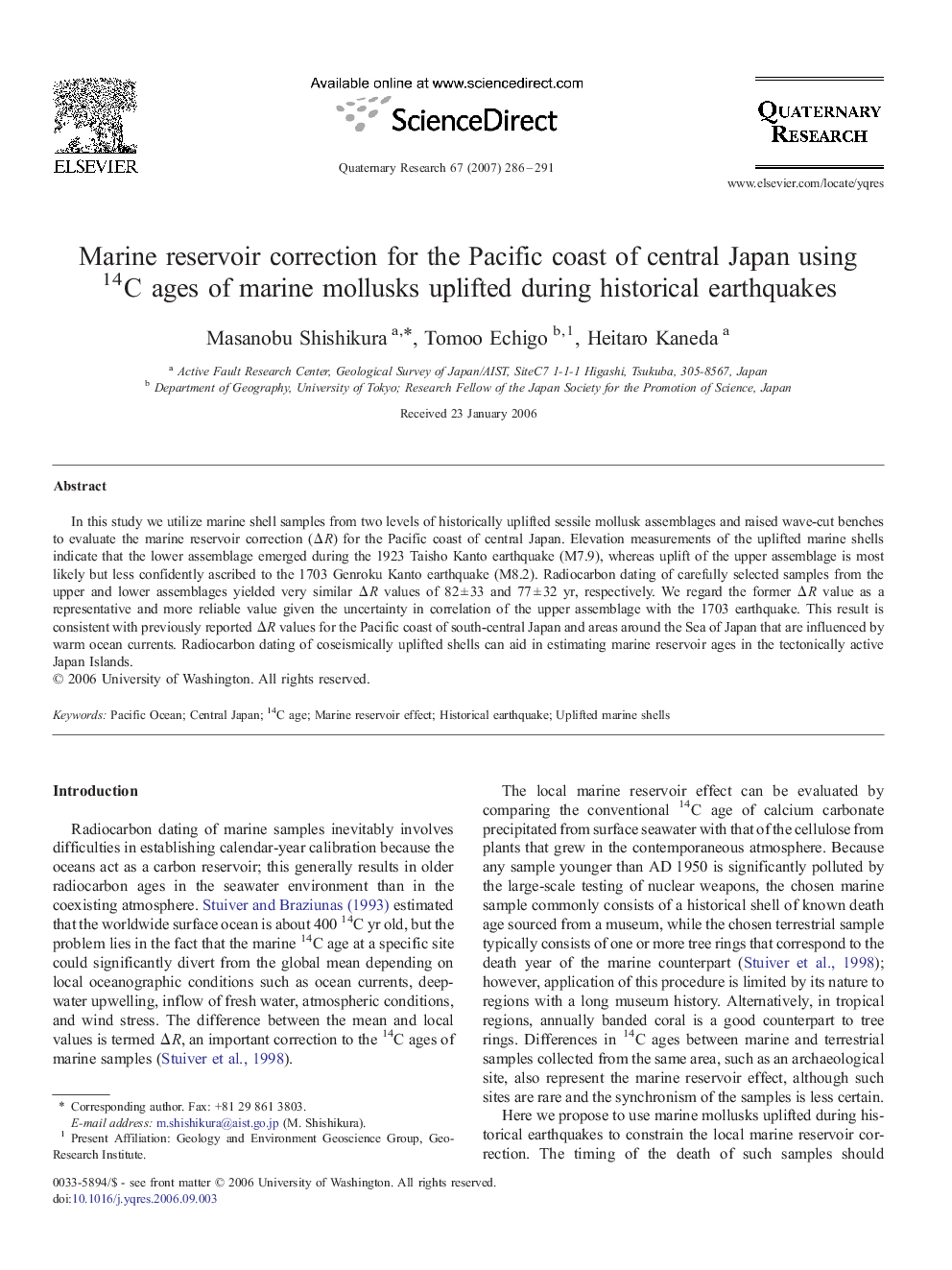| Article ID | Journal | Published Year | Pages | File Type |
|---|---|---|---|---|
| 1045895 | Quaternary Research | 2007 | 6 Pages |
In this study we utilize marine shell samples from two levels of historically uplifted sessile mollusk assemblages and raised wave-cut benches to evaluate the marine reservoir correction (ΔR) for the Pacific coast of central Japan. Elevation measurements of the uplifted marine shells indicate that the lower assemblage emerged during the 1923 Taisho Kanto earthquake (M7.9), whereas uplift of the upper assemblage is most likely but less confidently ascribed to the 1703 Genroku Kanto earthquake (M8.2). Radiocarbon dating of carefully selected samples from the upper and lower assemblages yielded very similar ΔR values of 82 ± 33 and 77 ± 32 yr, respectively. We regard the former ΔR value as a representative and more reliable value given the uncertainty in correlation of the upper assemblage with the 1703 earthquake. This result is consistent with previously reported ΔR values for the Pacific coast of south-central Japan and areas around the Sea of Japan that are influenced by warm ocean currents. Radiocarbon dating of coseismically uplifted shells can aid in estimating marine reservoir ages in the tectonically active Japan Islands.
